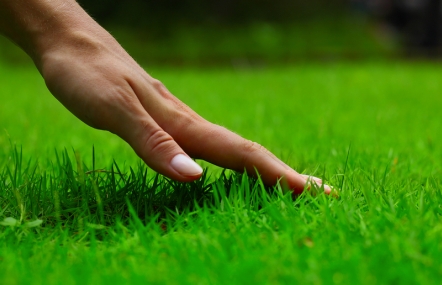First time homebuyers may not recognize the immense amount of time, effort, and money that goes in to properly maintaining a lawn, and in helping it look its best. In fact, even more experienced homebuyers make not immediately notice of their new lawn, as much of the focus rightly is on the house, and not necessarily on the property surrounding it. In fact, unless it was in especially poor condition (e.g. excessive weed growth, large brown patches, etc.), you likely didn’t give much thought to it.

But how can you make sure your new lawn looks its best? As it turns out, you can help it prosper before even moving in. With this in mind, here are 5 helpful tips that can help you accomplish just this:
Tip #1: Give Your Green Thumb a Head Start
In order to make sure you’re not inheriting an expensive, time-consuming project as soon as you move in, make sure you find out what the prior owner’s lawn maintenance regimen was. Ask questions like:
- Was the lawn regularly fertilized? If so, which brand of fertilizer was used, and what mix?
- Similarly, has the lawn been treated for weeds? If so, does the prior owner have a preferred brand, as well as any specific tips or tricks? After all, every lawn is different.
- Is a sprinkler system already installed? If so, make sure the previous owner leaves any documentation behind, and that you understand how to fully operate it.
If you haven’t paid much attention to the lawn yet, now may be a good time. And if you’re still in the negotiating phase, make sure you let your Realtor know of any lawn maintenance red flags. This way you may be able to work with the existing owner to repair any of the problem areas, or to negotiate a lower price with these needs in mind.
Tip #2: A Little Care Goes a Long Way
Once all the dust settles from moving into your new home, you may quickly realize that the grass really is greener on the other side—in your neighbor’s yard, that is. Because spring is such a beautiful time of year in Seattle, it can be easy to contract an acute case of “lawn envy” when you see that yours isn’t living up to its true potential. So what can you do?
Just like you, your lawn needs water to thrive, whether it’s rain or through manual watering, at least 5-6 times per week. In order to avoid over-evaporation, it’s best to water for 8-10 minutes in the morning and again at sunset, which is something an automatic sprinkler system makes effortless. If a system like this isn’t within your budget, a less expensive system that attaches to a garden hose can be purchased at your local home improvement store, though you’ll have to turn it on manually.
Tip #3: Grab the Gloves
Admittedly, this is most people’s least favorite option, but it’s often the most effective—putting on a quality pair of gardening gloves, and picking weeds by hand. While it’s definitely labor-intensive, it’s also very productive because it gives you the ability to pull the weeds directly from the root, which will prevent regrowth.
If this isn’t an option, make a short trip to your local home improvement store, and ask an associate about the most effective weed treatments for your specific situation. In fact, you can even take a few pictures of the different weed varieties in your lawn, which will provide even more useful information for the associate. If you’re unfamiliar with the numerous de-weeding treatments, it’s important that you ask for help because using the wrong one can end up damaging your lawn.
Tip #4: Spread the Love
Once you’ve established a regular watering regimen and addressed any weeds in your lawn, it’s now time to fertilize. Although it won’t kill any existing weeds at the root (which is why you had to hand-pull them in the first place), Scotts 5000-sq ft Turf Builder plus Halts Crabgrass Preventer Spring Lawn Fertilizer has proven to be an ideal fertilizer in preventing future crabgrass growth. We’d recommend using the Scotts Turf Builder 23-lb Broadcast Spreader (here’s a quick video about the process)to help evenly distribute the fertilizer, but remember to set the diameter to “3” unless instructed otherwise by your home improvement store associate. It’s important that you not spread fertilizer by hand, as this causes high concentrations in some areas, and low concentrations in others, which can actually “burn” your lawn and create brown spots.
Tip #5: Give Your Lawn a Haircut
Now that you’ve put in all the hard work watering, getting rid of weeds, and fertilizing, there’s one final step: mowing. This should be done at regular intervals during the spring and summer, usually once every 1- to 1.5 weeks. Also, make sure you’re continuing to water regularly—especially right after mowing—since your grass is especially “thirsty” during this time.
A Green Lawn in the Emerald City
Now that you’re moved in to your new home, and your grass is greener than ever, sit back, relax, and take some time to appreciate all your hard work. After all, your neighbors have definitely taken notice!
Note: If you haven’t experienced desirable results at this point, contact a lawn specialist, who should be able to help. Good luck!





